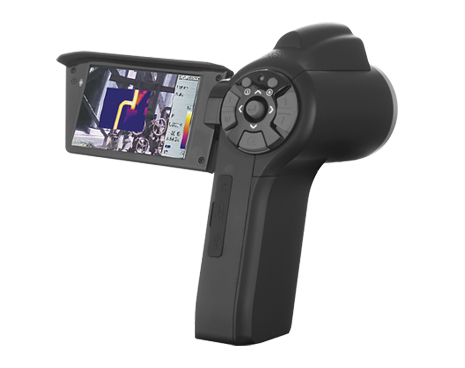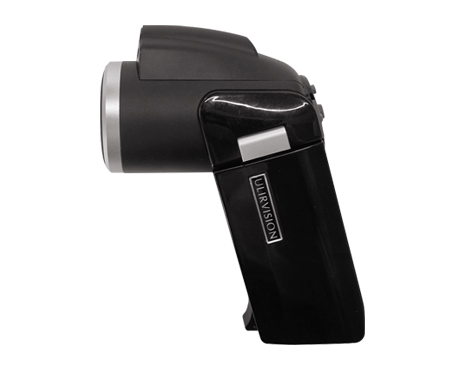Key Points When Selecting the Infrared Camera Detector
(2022年)https://www.ulirvisiontech.com/products/gas-leaks-camera/
https://www.ulirvisiontech.com/products/thermal-imaging-camera-ti175-ti395.html
Zhejiang ULIRVISION Technology Co., Ltd. (ULIRVISION) is dedicated to researching, designing, manufacturing, integrating the IR and UV systems. Since the establishment in 2005, ULIRVISION has served its clients worldwide with cutting-edge technology in handheld thermal imaging camera, thermal imaging cores, thermal night vision systems, thermal surveillance camera, and corona cameras. Innovative solutions are brought into power industry, electrical industry, automation application, firefighting, surveillance monitoring, and night vision areas through ULIRVISION.
The infrared camera detector uses the infrared detector and the optical imaging objective to receive the infrared radiation energy distribution pattern of the target, and then reflect it on the photosensitive element of the infrared detector, so as to obtain the infrared image, which corresponds to the thermal distribution field on the surface of the object. Generally speaking, infrared camera detector is to transform the invisible infrared energy emitted by an object into a visible thermal image. Below is a simple arrangement for friends to refer to.
1. Pixels of infrared camera detector
First of all, you need to determine the pixel level of the infrared camera detector you want to buy. Most infrared camera detectors are related to the pixel level. The pixels of the relatively high-end products in the civil infrared camera detector are 640 * 480 = 307200. The infrared pictures taken by the high-end infrared camera detector are clear and delicate, and the minimum size measured at 12 meters is 0.5 * 0.5cm; the pixels measured at the middle end of the infrared camera detector are 320 * 240 = 76800, and the minimum size measured at 12 meters is 1 * 1cm; the pixels measured at the low end of the infrared camera detector are 160 * 120 = 19, 200, the minimum dimension measured at 12m is 2 * 2cm. The higher the visible pixel is, the smaller the minimum size of the target is.
2. The temperature measurement range of infrared camera detector and the objects
Determine the temperature range according to the temperature range of the object to be measured, and select the infrared camera detector with the appropriate temperature range. At present, most infrared camera detectors on the market are divided into several temperature ranges, such as - 40-120 ℃, 0-500 ℃, which is not that the larger the span of temperature range is, the better it is, instead, the smaller the span of temperature range is, the more accurate the temperature measurement is. In addition, when the infrared camera detector needs to measure objects above 500 ℃, it needs to be equipped with corresponding high-temperature lens.
3. Temperature resolution of infrared camera detector
The temperature resolution reflects the temperature sensitivity of an infrared camera detector. The smaller the temperature resolution is, the more obvious the infrared camera detector's response to the temperature change is. Select detector with small temperature resolution as much as possible. The main purpose of infrared camera detector is to find out the temperature fault point through the temperature difference. It is not significant to measure the temperature value of a single point. It is mainly to find the relative hot spot through the temperature difference, which plays the role of pre-maintenance.
4. Spatial resolution
In short, the smaller the spatial resolution value is, the higher the spatial resolution is; the more accurate the temperature measurement is, the smaller the spatial resolution value is; the smallest target to be measured can cover the pixels of the infrared camera detector, and the measured temperature is the real temperature of the target to be measured. If the spatial resolution value is larger, the spatial resolution is lower. The minimum target can not completely cover the pixels of the infrared camera detector, the test target will be affected by its environmental radiation. The test temperature is the average temperature of the tested target and its surrounding temperature, and the value is not accurate enough.
5. Temperature stability
The core component of infrared camera detector is infrared detector. At present, there are two kinds of detectors, vanadium oxide crystal and polysilicon detector. The main advantage of vanadium oxide detector is that the MFOV (measurement field of view) is 1, and the temperature measurement is accurate to 1 pixel. ASI (polycrystalline silicon) sensor, MFOV is 9, that is, the temperature of each point is based on the average of 3 × 3 = 9 pixels. Vanadium oxide detector has good temperature stability, long service life and small temperature drift.
6. Combination function of infrared and visible image
If the combination of infrared image and visible image display reduces a lot of work, you can judge the unknown hot spot in the infrared image according to the visible image, and the automatic report generation will also greatly reduce the operation time.
- このできごとのURL:




コメント